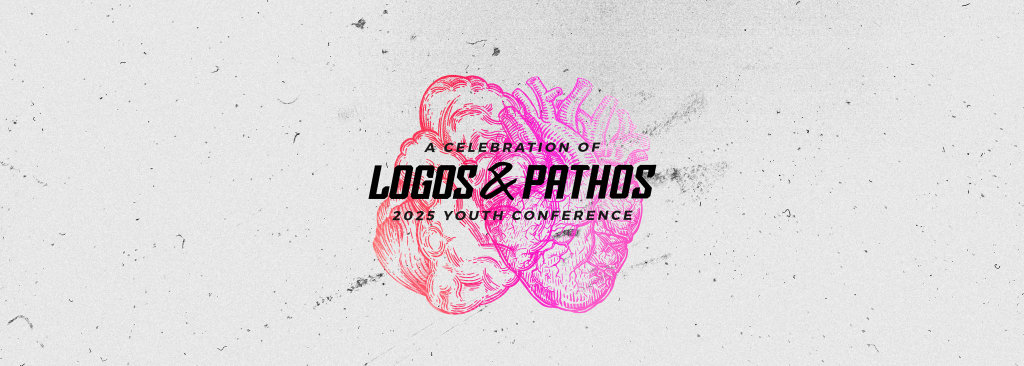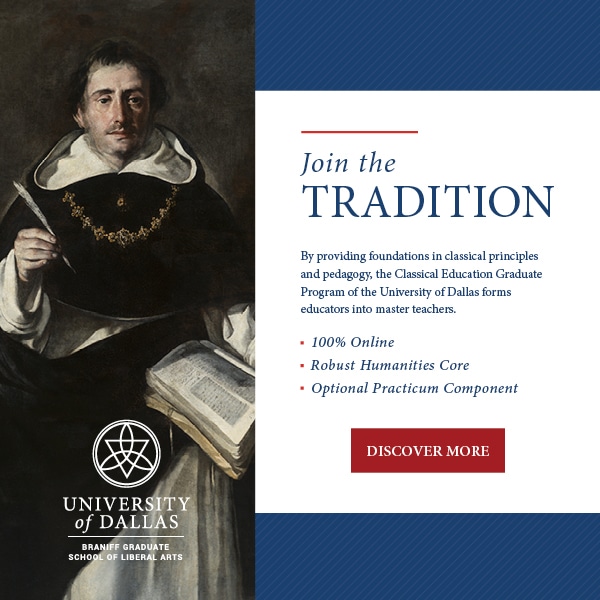How to Be a Good Reader (According to C.S. Lewis)
An excerpt from Louis Markos' new handbook, C.S. Lewis: An Apologist for Education, published by Classical Academic Press

In the first chapter of his first published work of literary criticism, The Allegory of Love (1936), Lewis, while attempting to unpack for the modern reader Chrétien de Troyes’s allegorical treatment of Love and Hate, offers this sage advice: “We have to worm our way very cautiously into the minds of these old writers: an a priori assumption as to what can, and what can not, be the expression of real imaginative experiences is the worst possible guide.” As we saw earlier, Lewis advocated, and carried out in his own work, a kind of genial criticism that respects the beliefs of the author and the common practices and responses of his age.
As teacher and critic, Lewis urged his students and readers to suspend their own agendas and personal assumptions and accept a work on its own terms. Like Matthew Arnold before him, Lewis sought ever to see the epic or tragedy or romance as it was in itself. In practice that meant carefully identifying the genre of the work being studied and then establishing what exactly that genre proposed to do for its reader. We would not evaluate a new car on the basis of how effectively it removes dust from our house. In the same way, we should not expect allegories to be realistic in the manner of modern novels or medieval books to champion a vision of the cosmos not held by anyone before the Enlightenment.
 As an educator of his own students and of the public at large, Lewis took the time to provide modern readers with the background they needed to enter imaginatively into the world of medieval and Renaissance literature. Lewis’s academic works allow us to do what he encouraged readers to do when approaching older literature: “By steeping yourself in the vanished period, you can then re-enter the poem with eyes more like those of the natives.” Lewis cared less about imposing his own views of literature upon his students than about providing them with the proper tools so that they could navigate the poem on their own and have their own literary encounters with Beowulf or Lancelot or the Wife of Bath or the Redcrosse Knight. “One of Lewis’s greatest virtues as a critic,” writes Leland Ryken, is that “he consistently steps forward as the reader’s travel guide.”
As an educator of his own students and of the public at large, Lewis took the time to provide modern readers with the background they needed to enter imaginatively into the world of medieval and Renaissance literature. Lewis’s academic works allow us to do what he encouraged readers to do when approaching older literature: “By steeping yourself in the vanished period, you can then re-enter the poem with eyes more like those of the natives.” Lewis cared less about imposing his own views of literature upon his students than about providing them with the proper tools so that they could navigate the poem on their own and have their own literary encounters with Beowulf or Lancelot or the Wife of Bath or the Redcrosse Knight. “One of Lewis’s greatest virtues as a critic,” writes Leland Ryken, is that “he consistently steps forward as the reader’s travel guide.”
So intent was Lewis on providing those tools that, near the end of his life, he published two books that complement each other on a practical and theoretical level. In the first, Studies in Words (1960), Lewis explores, in encyclopedic detail, the linguistic evolution of such common words as nature, wit, free, and conscience. In a prose style that balances technical precision with readability, Lewis shows how our understanding of literature rests heavily on our understanding of the words used by the author. Words, Lewis shows, are slippery things; they not only signify many things at the same time but shift and change over time.
In the final chapter of Studies in Words, Lewis, after working hard to equip and empower his readers, takes to task ungenial critics who use words as weapons to attack authors and genres they do not like—usually for personal rather than literary reasons. The true function of criticism, Lewis argues, is “not to discharge our hatred but to expose the grounds for it; not to vilify faults but to diagnose and exhibit them.” In hopes of finding an antidote to such criticism, Lewis followed up Studies in Words with An Experiment in Criticism (1961), a work that may seem bland on the surface but that offers a new, quite radical approach to literary criticism.
So convinced was Lewis that his proper role as teacher of literature was to promote good reading rather than to risk offering his own personal evaluations of Milton or Chaucer or Spenser that he formulated a theory that would seem to render his own work unnecessary. Reflecting back on four decades of teaching experience, Lewis suggests that the really vital distinction is not between good and bad books but between literary and nonliterary readers. Whereas the latter read books simply to pass time, the former open themselves to books and allow those books to change them.
Nothing upset Lewis more as a teacher than when one of his students told him that he had already read the Iliad or Aeneid or Canterbury Tales and therefore did not need to read it again. For Lewis, a true reader reads the books he loves over and over again. He doesn’t cross them off his list and move on to greener pastures. These two kinds of readers can read the same great work of literature and receive from it totally different things. The nonliterary reader cares only about the narrative and is annoyed by any stylistic touches that impede its flow. The literary reader enjoys the book as a book and revels in its style as much as in its content. As a result, the first reader is left untouched by the work, while the second comes away from it with feelings of joy and even awe that are far deeper than the simple pleasures afforded by entertainment.
Picking up on issues that appear in his earlier essays (particularly “On Three Ways of Writing for Children”), Lewis makes a further distinction between readers (both old and young) who experience literature as a sort of wish fulfillment in which they become the hero or heroine and readers who fix their attention not on the hero per se but on the world conjured by the book. Indeed, Lewis felt that the books that inflated the egos of children in a negative way were not the fairy tales and fantasy books but the “school story” books in which a young person becomes the head cheerleader or the star athlete. Readers of fairy tales usually react to the story with a sense of numinous wonder and humility; readers of school stories fantasize about being the popular student rather than being swept away to a world that is bigger than themselves.
An Experiment in Criticism may at first seem to privilege the reading habits of graduate students and professors over those without liberal arts degrees. In matter of fact, however, Lewis argues that the first type of readers are often less able to lose themselves in literature. In the academic circles that Lewis frequented, an “amazing knowledge of Chaucerian or Shakespearean criticism sometimes co-exist[ed] with a very inadequate knowledge of Chaucer or Shakespeare.” In the essays and criticism written by such readers, the work under study is generally bent to fit scholarly presuppositions rather than experienced as a thing of beauty in itself.
What then does Lewis believe the proper response to literature should be? How should the right type of reader interact with literature? Although Lewis shows some reluctance over answering that question in any definitive way, he does suggest that good readers read books because the books take them out of themselves and allow them to see the world through new eyes. In a sort of magical exchange, the reading of books heals us of our cosmic loneliness while yet allowing us to remain ourselves. “Here, as in worship, in love, in moral action, and in knowing, I transcend myself; and I am never more myself than when I do.”
This excerpt has been published with permission from Classical Academic Press.
You can buy a copy of this book, or learn more about CAP’s Giants in the History of Education series, by clicking here. Enter coupon code CIRCE20 to save 20% on the book.
Louis Markos
Louis Markos holds a BA in English and History from Colgate University and an MA and PhD in English from the University of Michigan. He is a professor of English and scholar in residence at Houston Baptist University, where he teaches courses on British Romantic and Victorian poertry and prose, the classics, C.S. Lewis and J.R.R. Tolkien, and film.











